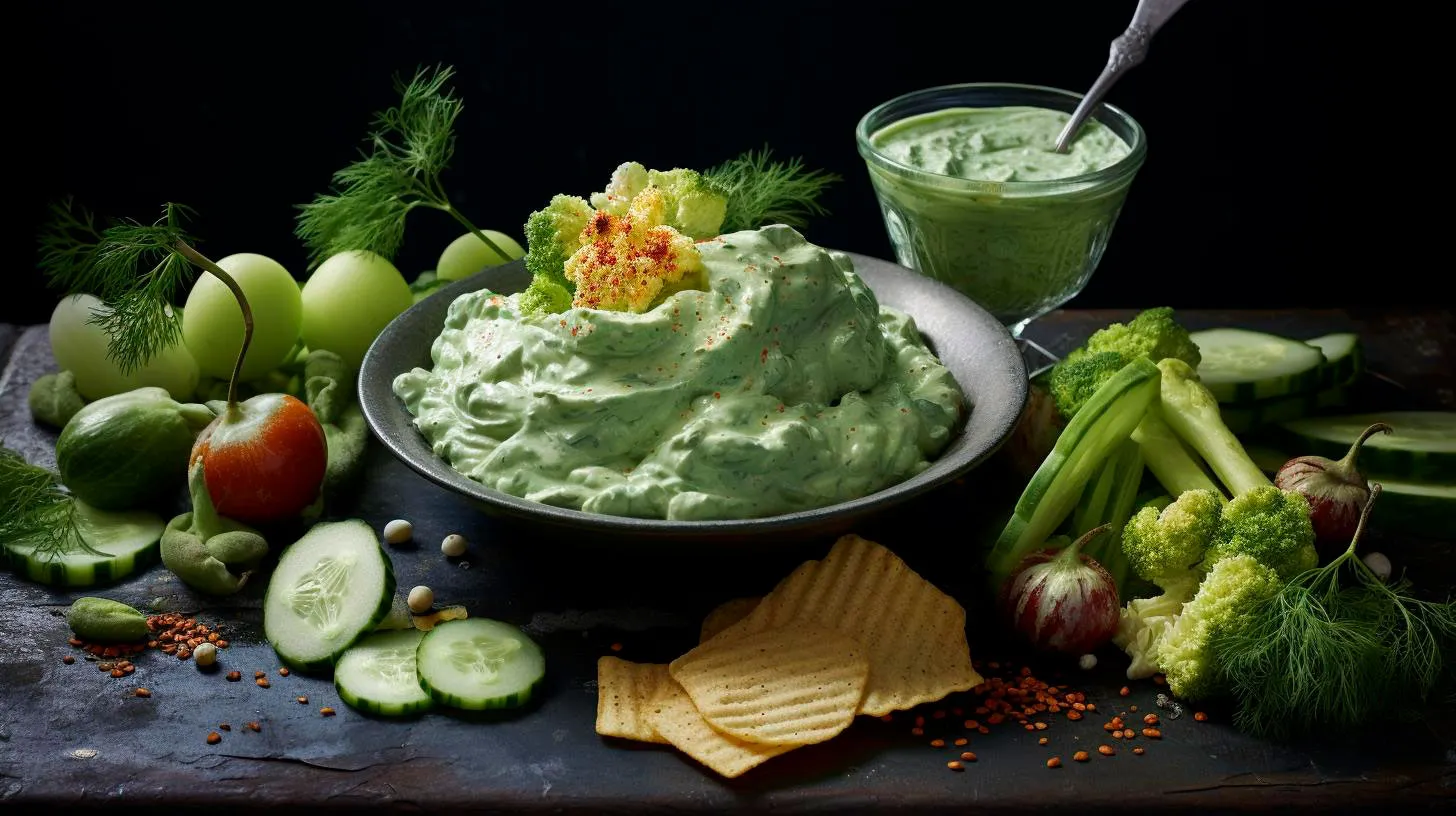Sustainable Materials: The Future of Sushi Utensils
In recent years, sustainable materials have emerged as an important aspect of the sushi utensils industry, revolutionizing the way we enjoy this delicious cuisine.
The importance of sustainable materials
Traditional sushi utensils, such as disposable chopsticks and plastic soy sauce containers, have long been considered convenient options. However, the excessive use of these single-use plastics has had a detrimental impact on our planet. According to the United Nations, more than 8 million tons of plastic waste ends up in the oceans each year, causing severe damage to marine life and ecosystems.
By transitioning to sustainable materials for sushi utensils, the food industry can play a part in reducing this environmental crisis. Utilizing biodegradable materials not only minimizes waste but also ensures that the utensils do not contribute to pollution. Furthermore, sustainable materials often have a smaller carbon footprint and require less energy to produce, making them a more eco-friendly option overall.
Key sustainable materials for sushi utensils
1. Bamboo: Bamboo is a fast-growing, renewable resource that has gained popularity as an eco-friendly alternative to traditional utensil materials. It is lightweight, strong, and perfectly suited for sushi chopsticks and serving plates. Bamboo also imparts a natural and earthy aesthetic to sushi dining experiences.
- Advantages of bamboo:
- Renewable resource
- Biodegradable
- Durable and sturdy
- Naturally antimicrobial
- Advantages of sugarcane:
- Repurposes waste
- Biodegradable
- Heat-resistant
- Microwave-safe
- Advantages of palm leaf:
- Renewable resource
- Biodegradable
- Compostable
- Durable
- Sustainable materials are crucial for reducing the environmental impact of the sushi utensils industry.
- Bamboo, sugarcane, and palm leaf are key sustainable materials used in sushi utensil production.
- Benefits of sustainable sushi utensils include a reduction in single-use plastic waste and protection of marine life.
- Restaurants can enhance their reputation and attract environmentally-conscious customers by prioritizing sustainable options.
- The future of sushi utensils lies in the continued adoption of sustainable materials.
- Reduced Waste: By eliminating the need for disposable chopsticks and single-use plastic containers, sustainable sushi tools greatly reduce the amount of waste generated in sushi restaurants and takeaway services. This minimizes the environmental footprint and helps preserve our ecosystems.
- Cost-Efficiency: While initially, the price of sustainable sushi tools may be higher than their disposable counterparts, their long-term cost-efficiency is evident. As businesses transition to reusable tools, they can save on recurring expenses associated with purchasing disposable items.
- Enhanced Customer Experience: Sustainable sushi tools not only contribute to a greener environment but also enhance the overall dining experience. The use of high-quality, durable tools can elevate the perceived value of sushi, attracting eco-conscious customers who appreciate sustainable practices.
- Brand Differentiation: Adopting sustainable sushi tools allows businesses to establish themselves as environmentally responsible and conscious. This can help differentiate the brand from competitors and attract a growing segment of consumers who prioritize sustainability in their choices.
- Rapid Renewable Resource: Bamboo is known for its remarkable growth speed, making it an ideal renewable resource compared to hardwood trees. It can be harvested in just a few years and regenerates without replanting.
- Strength and Durability: Bamboo is remarkably strong and durable, making it suitable for making long-lasting sushi tools. Its natural resistance to moisture also prevents the growth of bacteria, providing a hygienic option for food preparation.
- Minimal Environmental Impact: Bamboo cultivation requires fewer resources compared to other materials used in sushi tools, such as plastic or metals. It also has a minimal carbon footprint, contributing to the reduction of greenhouse gas emissions.
- Sustainable sushi tools help reduce waste and promote environmental responsibility.
- The demand for eco-friendly alternatives is growing, creating opportunities for businesses to adopt sustainable practices.
- Switching to sustainable sushi tools offers advantages such as reduced waste, cost-efficiency, enhanced customer experience, and brand differentiation.
- Bamboo is a popular material for sustainable sushi tools due to its rapid renewability, strength, durability, and minimal environmental impact.
- Choose reusable bamboo chopsticks to reduce waste and deforestation.
- Contribute to eco-conscious dining experiences by opting for sustainable materials.
- Opt for biodegradable serving plates and trays to minimize landfill waste.
- Choose eco-friendly materials like sugarcane fiber or compostable plastics.
- Support sushi restaurants that prioritize sustainable seafood sourcing.
- Look for MSC or ASC certifications to ensure responsible fishing or farming practices.
- Choose sushi restaurants that prioritize minimalistic and eco-friendly packaging.
- Opt for biodegradable paper, plant-based plastics, or reusable containers for takeout or delivery.
- Bamboo utensils are lightweight and easy to handle, providing a comfortable dining experience.
- They are durable and can be reused multiple times, reducing the need for single-use options.
- Bamboo is naturally antimicrobial, making it a hygienic choice for sushi enthusiasts.
- The production of bamboo utensils has a lower carbon footprint compared to traditional plastic alternatives.
- Recycled plastic sushi utensils are made from post-consumer plastic waste, reducing the demand for virgin plastics.
- They are durable and long-lasting, offering excellent value for both consumers and businesses.
- The production of recycled plastic utensils saves energy, reduces greenhouse gas emissions, and helps divert plastic waste from landfills.
- Recycled plastic can be recycled again, ensuring a circular economy and further minimizing environmental impact.
- Choosing bamboo utensils offers a sustainable alternative, as bamboo is a renewable resource with a low carbon footprint.
- Recycled plastic utensils provide an even greener option by utilizing post-consumer plastic waste and reducing the demand for virgin plastics.
- Both bamboo and recycled plastic utensils are durable, reusable, and contribute to minimizing plastic waste.
2. Sugarcane: Sugarcane is another sustainable material that has found its way into the production of sushi utensils. After the sugarcane stalks are processed to obtain sugar, the remaining pulp, known as bagasse, is often used as a raw material for utensils. This not only repurposes waste but also reduces the need to cut down additional forests for raw materials.
3. Palm leaf: Utilizing fallen palm leaves to create sushi plates and bowls is another environmentally-friendly option. These leaves are collected, thoroughly cleaned, and pressed into various shapes to serve as sustainable alternatives to traditional plastic or paper products.
The benefits of sustainable sushi utensils
1. Reduction in single-use plastic waste: By using sustainable materials, the sushi industry can greatly reduce its reliance on single-use plastics. This helps combat plastic pollution, decreasing the amount of waste that ends up in landfills and oceans.
2. Protection of marine life and ecosystems: Switching to sustainable materials ensures that sushi utensils do not harm marine life and ecosystems. Sustainable materials are biodegradable and do not release harmful toxins, preserving the delicate balance of our oceans.
3. Eco-friendly reputation: Consumers are increasingly conscious of environmental issues and actively seeking eco-friendly alternatives. Restaurants that prioritize the use of sustainable sushi utensils can enhance their reputation and attract environmentally-conscious customers.
The future of sushi utensils
The adoption of sustainable materials in the sushi utensils industry signals a positive change toward a more environmentally-friendly future. As awareness continues to grow, it is expected that more restaurants will make the switch to sustainable options. The use of materials such as bamboo, sugarcane, and palm leaf will become increasingly commonplace, offering consumers a guilt-free and enjoyable sushi dining experience.
Key takeaways:
Reducing Waste: The Role of Sustainable Sushi Tools
In this article, we delve into the role of sustainable sushi tools in reducing waste and promoting environmental responsibility.
The Impact of Sushi Culture on the environment
Sushi is not only a culinary delight but also a cultural phenomenon. However, the traditional sushi-making technique has inadvertently contributed to environmental issues. Disposable chopsticks, single-use plastic containers, and excessive packaging have led to a significant increase in waste generation. It is estimated that over 100,000 pairs of disposable chopsticks are used in sushi restaurants worldwide every day, resulting in staggering amounts of waste.
The Need for Sustainable Alternatives
Recognizing the impact of disposable sushi tools, individuals and businesses have started to seek sustainable alternatives. This increasing demand for eco-friendly options has led to the emergence of sustainable sushi tools, creating an opportunity to reduce waste and promote a more environmentally conscious sushi culture.
Advantages of Sustainable Sushi Tools
Switching to sustainable sushi tools offers numerous advantages, both for businesses and consumers:
The Role of Bamboo in Sustainable Sushi Tools
Bamboo has emerged as a popular and sustainable material for sushi tools. Here are a few reasons why:
Key Takeaways
Sustainable sushi tools have the potential to revolutionize the sushi industry and contribute to a more eco-friendly dining experience. Here are the key takeaways:
By embracing sustainable sushi tools, we can enjoy our favorite sushi dishes guilt-free, knowing that we are actively contributing to a healthier and more sustainable planet.
Eco-Conscious Innovations Reshaping Sushi Tools
However, in recent times, there has been a growing awareness of the environmental impact associated with the production and consumption of sushi, specifically the tools and materials used in its preparation. This has led to the development of eco-conscious innovations that are reshaping the way sushi is made and enjoyed, reducing its carbon footprint while preserving its essence.
1. Sustainable Bamboo Chopsticks
One of the most commonly used utensils in sushi restaurants is the humble chopstick. Traditionally made from disposable materials such as wood or bamboo, their widespread use contributes to deforestation and waste. However, sustainable alternatives such as reusable bamboo chopsticks are gaining popularity. Bamboo is a fast-growing plant that requires minimal water and no pesticides, making it an eco-friendly choice. Furthermore, bamboo chopsticks are durable and lightweight, providing a comfortable dining experience.
Key Takeaway:
2. Biodegradable Serving Plates and Trays
Another area where eco-conscious innovations are making a difference is in the realm of serving plates and trays. Traditionally, these were made from plastic or non-biodegradable materials, leading to a significant contribution to landfill waste. However, modern advancements have given rise to biodegradable options made from materials such as sugarcane fiber or compostable plastics. These alternatives offer the same level of functionality while minimizing the environmental impact. They can be easily disposed of without leaving a lasting mark on the planet.
Key Takeaway:
3. Sustainable Seafood Sourcing
The sustainability of sushi goes beyond the tools used in its preparation and extends to the ingredients themselves. As global demand for seafood continues to rise, overfishing has become a significant concern. Eco-conscious sushi restaurants are embracing sustainable seafood sourcing practices to protect oceans and marine life. They collaborate with organizations such as the Marine Stewardship Council (MSC) or the Aquaculture Stewardship Council (ASC) to ensure the seafood they serve is caught or farmed responsibly.
Key Takeaway:
4. Minimalistic Sushi Packaging
When ordering sushi for takeout or delivery, packaging plays a crucial role in preserving the freshness and integrity of the food. However, the excessive use of plastic packaging has raised concerns about its environmental impact. Innovative sushi restaurants are adopting minimalistic packaging solutions, using eco-friendly materials such as biodegradable paper, plant-based plastics, or reusable containers. These options not only reduce waste but also contribute to an eco-conscious dining experience.
Key Takeaway:
As eco-conscious innovations continue to reshape the sushi industry, it is crucial for both consumers and businesses to embrace sustainable practices. By opting for reusable bamboo chopsticks, biodegradable serving plates, responsibly-sourced seafood, and minimalistic packaging, we can enjoy the art of sushi while minimizing its environmental impact.
Together, we can pave the way for a more sustainable and delicious future.
From Bamboo to Recycled Plastic Eco-Friendly Sushi Utensils
Fortunately, the world is becoming more aware of the need for eco-friendly alternatives. In this article, we will explore the journey from bamboo to recycled plastic when it comes to eco-friendly sushi utensils.
The Rise of Eco-Friendly Sushi Utensils
The demand for sustainable and eco-friendly products has been steadily increasing in recent years. Consumers are becoming more conscious of the impact their choices have on the environment, and businesses are taking notice. This trend extends to the food industry, including sushi restaurants.
Sushi utensils, such as chopsticks and sushi mats, traditionally made from bamboo, are being swapped for eco-friendly alternatives. Let’s take a closer look at two popular options: bamboo utensils and recycled plastic utensils.
1. Bamboo Utensils
Bamboo is a fast-growing and renewable resource, making it an excellent choice for eco-friendly utensils. Here are some key features and advantages of bamboo utensils:
According to research, bamboo grows up to 10 times faster than hardwood trees, making it an ideal choice for sustainable utensils. Moreover, bamboo is biodegradable, ensuring that it does not contribute to the growing problem of plastic waste.
2. Recycled Plastic Utensils
While bamboo utensils offer numerous advantages, some businesses are turning to recycled plastic alternatives as they strive for even greater sustainability. Here are some key bullet points about recycled plastic utensils:
Recycled plastic utensils showcase the potential for transforming waste into valuable resources. By choosing recycled plastic options, sushi restaurants contribute to a more sustainable future.
Key Takeaways
As consumers and businesses become more conscious of environmental issues, the demand for eco-friendly sushi utensils continues to grow. Here are the key takeaways:
Conclusion
From bamboo to recycled plastic, the world of eco-friendly sushi utensils offers promising alternatives to traditional options. By embracing sustainable materials and production processes, sushi restaurants and consumers can have their delicious sushi rolls guilt-free. So, next time you indulge in sushi, make a conscious choice and consider the eco-friendly utensils available. Together, we can protect the environment, one sushi roll at a time!


